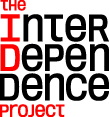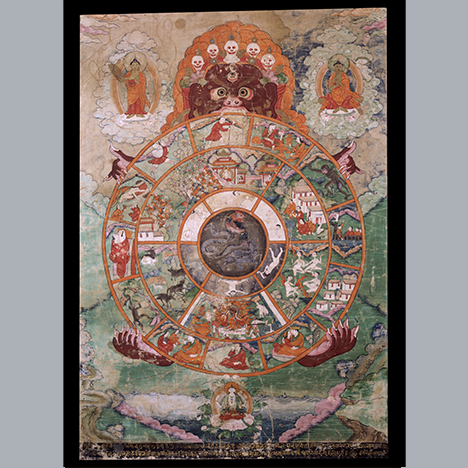
Theme: Impermanence
About the Mindfulness Meditation Podcast
The Rubin Museum of Art presents a weekly meditation session led by a prominent meditation teacher from the New York area, with each session focusing on a specific work of art. This podcast is recorded in front of a live audience, and includes an opening talk, a 20-minute sitting session, and a closing discussion. The guided meditation begins at 17:48.
If you would like to attend Mindfulness Meditation sessions in person or learn more, please visit our website at RubinMuseum.org/meditation.
This program is supported with thanks to our presenting partners Sharon Salzberg, the Interdependence Project and Parabola Magazine.


Related Artwork

In Tibet the Wheel of Existence is the most ubiquitous visual teaching tool that explains the cyclic process of life, death, and rebirth. It is directed at a general public and can be found painted at the entrance of nearly every monastery. The scenes within are pictorial expressions of the impersonal laws of karmic cause and effect, that ones’ own actions””both virtuous and wicked””bring about reward and retribution and will determine our fate in the next life.
While the ultimate goal in Buddhism is to escape this cycle of rebirth by attaining enlightenment, Tibetans recognize this as almost impossible for ordinary people to achieve, and so their first priority is to try to avoid a negative rebirth. The Wheel of Existence diagram is labeled below to help identify the six possible realms of rebirth and the affliction associated with each realm. At the center are the three root causes of this cycle of birth, death, and rebirth depicted as animals.
About the Speaker

Tracy Cochran is editorial director of Parabola, a quarterly magazine that for forty years has drawn on the world’s cultural and wisdom traditions to explore the questions that all humans share. She has been a student of meditation and spiritual practices for decades and teaches mindfulness meditation and mindful writing at New York Insight Meditation Center and throughout the greater New York area. In addition to Parabola, her writing has appeared in The New York Times, Psychology Today, O Magazine, New York Magazine, the Boston Review, and many other publications and anthologies. For more information please visit tracycochran.org.
